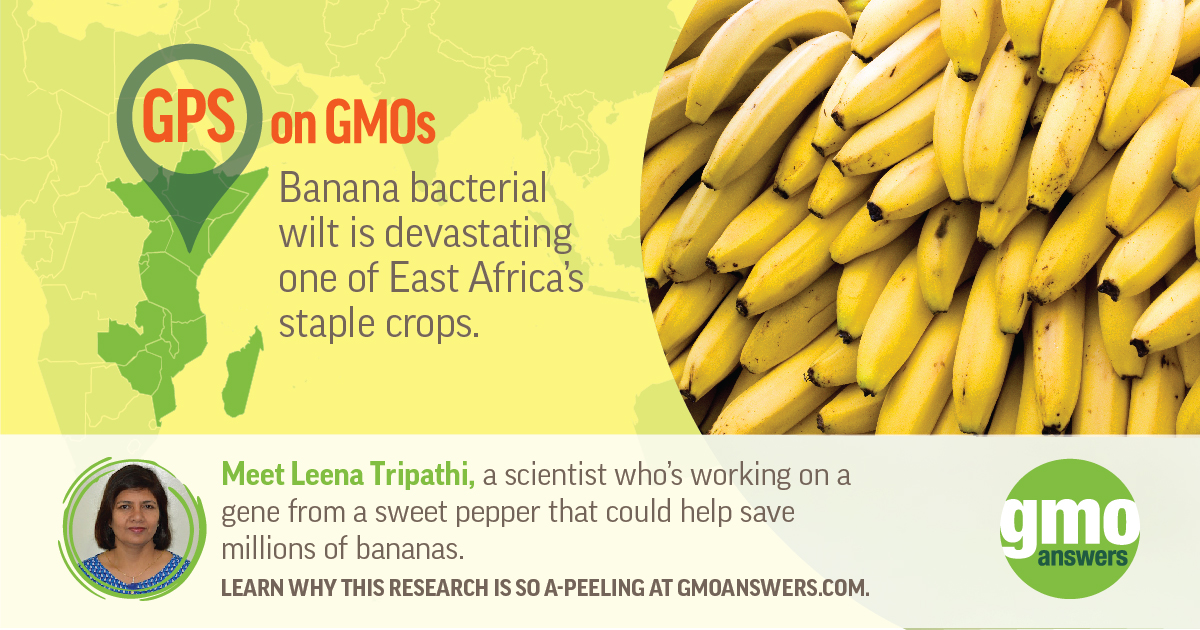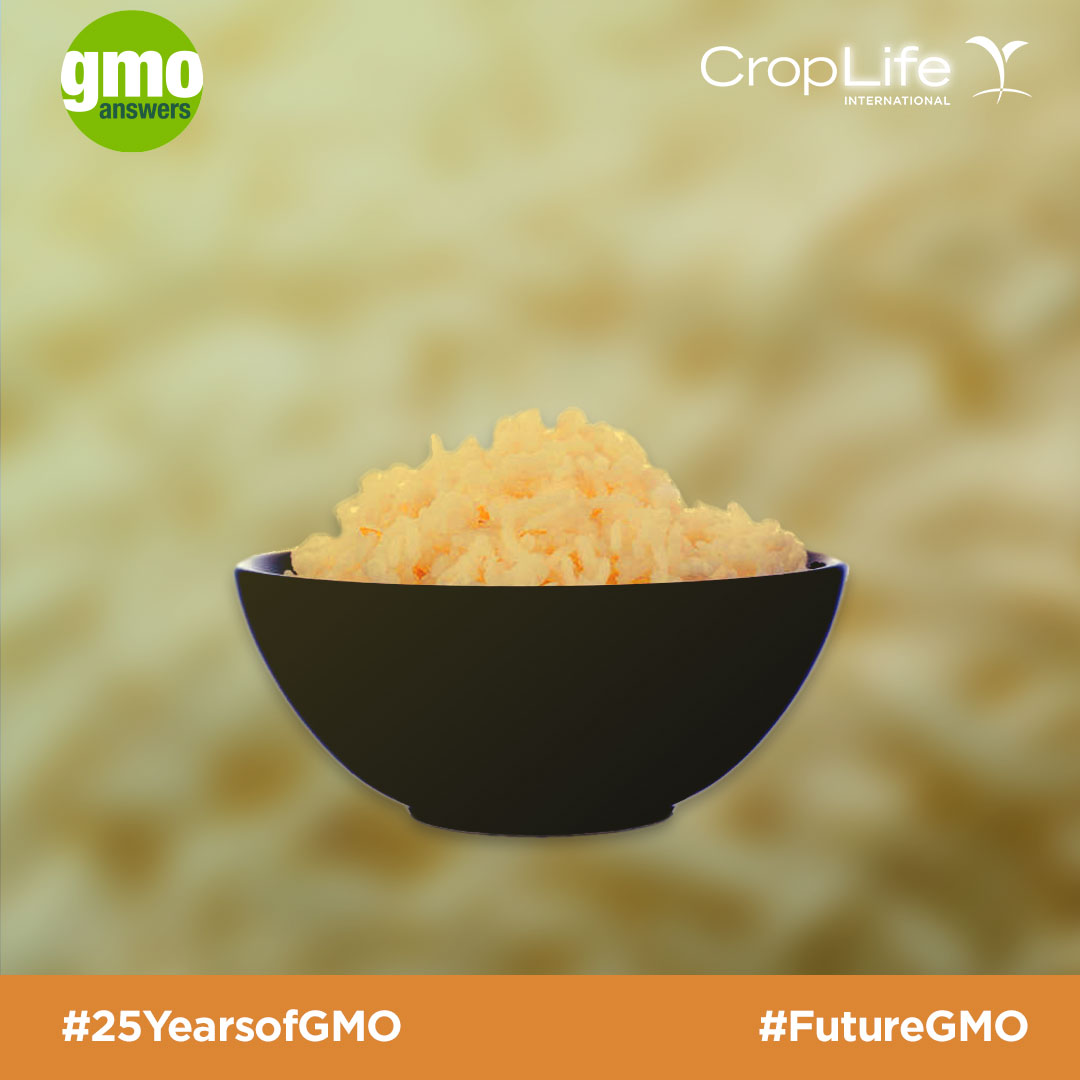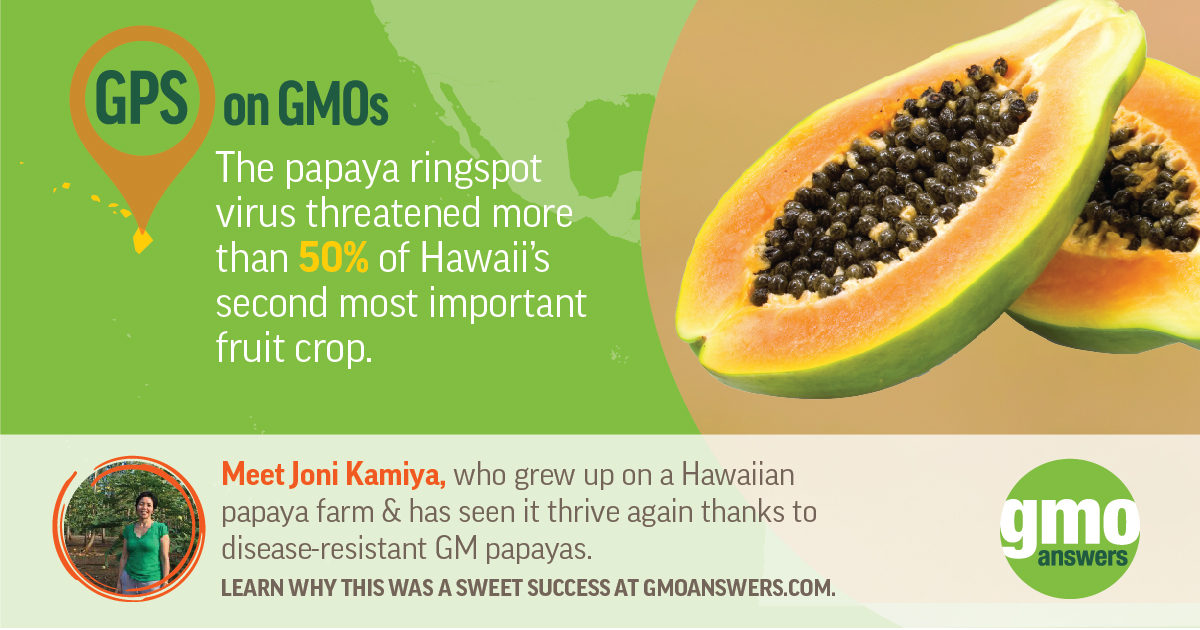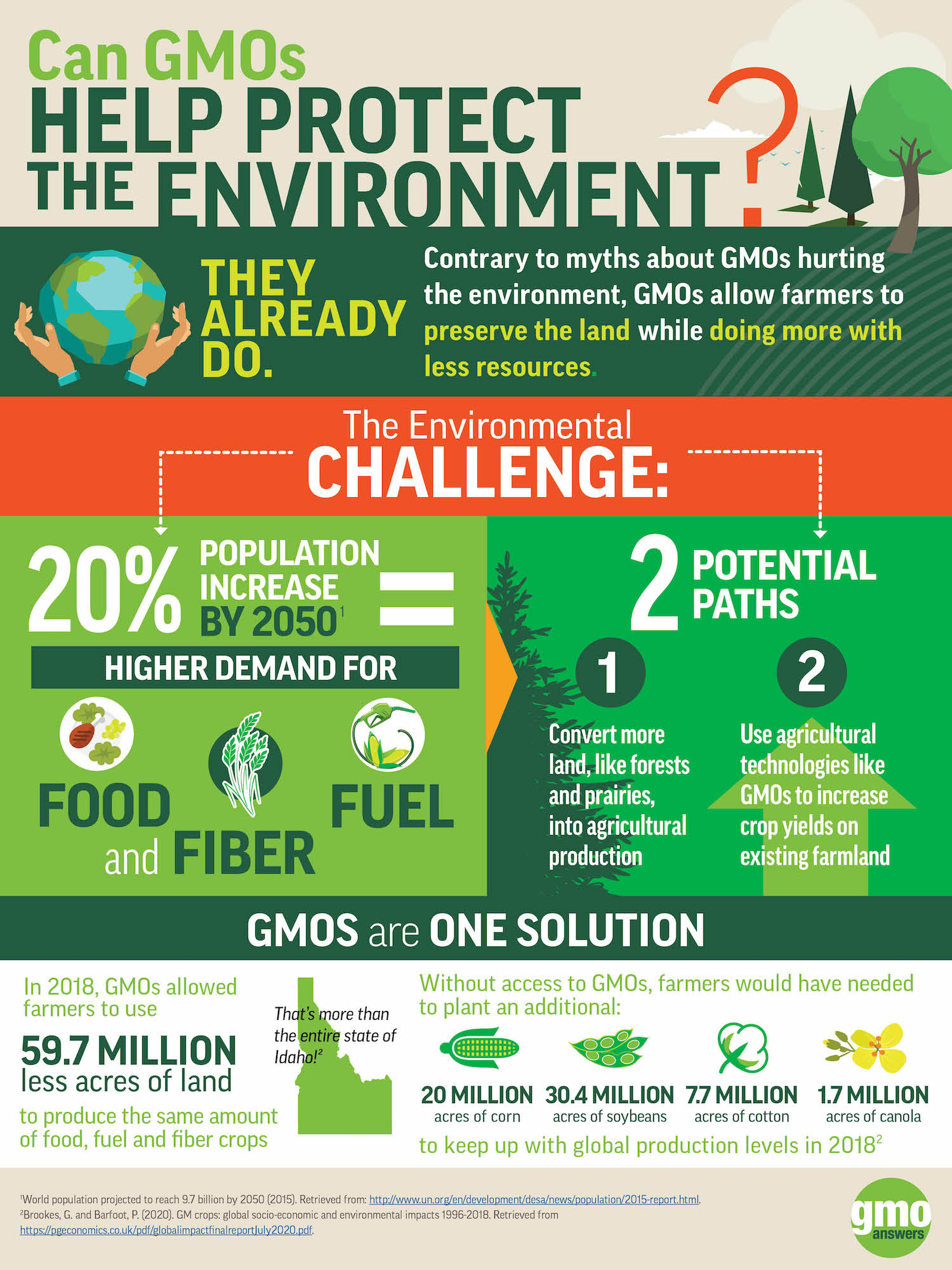GMOs Help Us Promote Food Security Worldwide and Fight Global Food Insecurity
Every day, farmers around the world use GMOs to help combat threats to food and the environment. Whether helping to protect crop yields against plant diseases, weeds, pests, or to reduce water use, GMOs are one of modern agriculture’s many innovations that allow farmers to grow more food with fewer resources.
The benefits of GMOs don’t stop at the farm. GMO crops can help to reduce food waste and combat undernourishment around the world.
In particular, GMOs play a key role in addressing food security challenges in developing nations.
The A-Peel of a Sustainable Banana

The banana is one of the most important staple food crops in East Africa. It feeds more than 100 million Africans and is mainly grown by smallholder subsistence farmers. But the banana is also vulnerable to pest infestation and various diseases, most notably the banana bacterial wilt disease, which ripens fruit prematurely – leading to the death of plants and rotting of fruits. Scientists are working on a GMO banana that is resistant to bacterial wilt, using a gene from a sweet pepper.
A Golden Age for Golden Rice

Rice is an important staple food source for more than half of the world’s population and accounts for between 30-72% of the energy intake across Asia alone. GMO rice, or ‘Golden Rice,’ which gets its name from its yellow color, is more nutritious than rice that isn’t genetically modified since it’s packed with beta-carotene, a rich source of vitamin A. Vitamin A Deficiency is a known cause of death and blindness in the developing world – one which ‘Golden Rice’ can help address. Recently, the Philippines government approved Golden Rice for planting, allowing Filipino farmers to become the first in the world to be able to cultivate a variety of rice enriched with nutrients to help reduce childhood malnutrition.
Taste the Rainbow – Papaya, That Is

The GMO Hawaiian papaya has helped save an important industry for Hawaiians since it came to the U.S. market in 1998. For decades, the Hawaiian papaya had been devastated by the papaya ringspot virus, which greatly reduced crop yields and production. Once the GMO Hawaiian papaya was approved and planted, the production and viability of the fruit increased tremendously, restoring the lifeline industry for Hawaiians. By managing the spread of the ringspot virus, this innovation helps underscore the impact GMOs can have on revitalizing a community.
Food Fight: Combating Global Food Waste with Unorthodox Solutions
Three billion tons of food, which represents one-third of all food produced for human consumption, is lost or wasted globally, according to the UN Food and Agriculture Organization. Food waste is a problem — and it’s a problem we need to address now. But due to public misconceptions around the safety and environmental benefits of GMOs, we aren’t using them to their full potential. We need to continue to combat misinformation about GMOs so that we can fully utilize this innovative technology to address food waste and other global environmental crises. Learn more about how GMOs can help address food waste and loss in this Medium blog post.
Top 5 Tools For Fighting Food Insecurity
As the population rises and the challenge of climate change intensifies, farmers will need new tools to keep up with the growing demand for food. Here are five ways that plant science will help meet the challenge of bringing nutritious, affordable food to everyone, from CropLife International.
Plant breeding and future food security
Plant breeders have been working for a long time to produce improved crops. As a result, the yield of some crops has increased by about 50 percent. The development of crop plants actually means increasing their quality, yield, preservation capacity and increasing tolerance against organic and inorganic stress. Over the past few decades, plant breeding has grown in importance to enhance the taste and nutritional value of food and to innovate regional varieties of different plants. Here’s how modern plant breeding helps to combat food insecurity.
GM crops could support food security in Africa, new study suggests
Genetically modified (GM) maize has produced higher yields than conventional hybrid varieties in South Africa, highlighting the technology’s potential to support food security in the face of climate challenges, a new study finds. "Our study shows that the gains from biotechnology for white maize as a staple food crop in South Africa have been greater than for yellow maize for livestock feed," said lead author Dr. Aaron Shew, an assistant professor of agricultural economics at Arkansas State University. "This could signal substantial potential to improve production of other staple crops in Africa with biotech tools." Learn more in this blog post from the Cornell Alliance for Science (no endorsement implied).
The Award for Starring Role in Food Security Goes To...

Food security is, and will continue to be, one of our greatest ongoing development challenges. We not only need to provide food and nutrition for a growing global population, but we must do so in the face of mounting environmental challenges. The global climate is changing, and land suitable for agriculture and food production is changing with it.
Salinification and desertification, flooding and drought, and natural disasters threaten agriculture across the globe. With changing temperatures, meanwhile, come new risks from pests and diseases. Agricultural and food security experts are investigating a range of ways to address these challenges. Solutions range from everything from new breeding programs to better monitoring and evaluation to farming strategies that reduce waste and increase yield. And yes, that includes GMOs. Learn more about the role of genetically modified crops in the struggle against food insecurity.
GMOs and World Hunger: The Good Fight
With an estimated world population of 9.7 billion by 2050, farmers will need to produce up to 70 percent more food than they do today to satisfy global demand. Did you know that the total land devoted to agriculture around the globe is almost 20 million square miles (48 million square km)? That’s more than five times the area of the United States. The availability of farmland is essential to agricultural production. And, yet, the availability of new land suitable for crop production is limited, partly because farmland is sometimes considered more valuable when converted into urban and suburban developments. Some estimate that we are losing agricultural land by up to 175 acres an hour. How can we grow more on less land and help food security? By planting genetically modified crops.
Feeding the world’s growing population through sustainable means is a big goal. But by using GMOs to help increase agricultural productivity and make farming more sustainable, it is a goal within reach.

